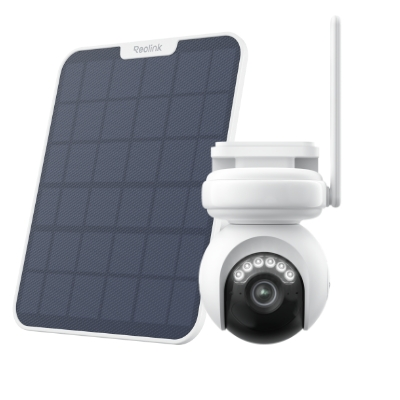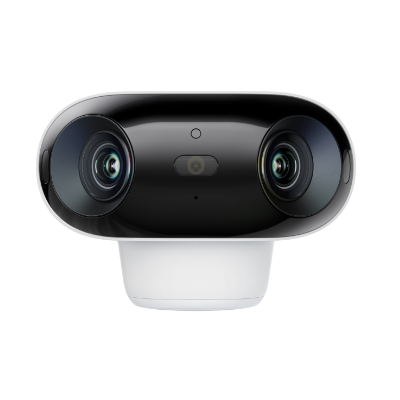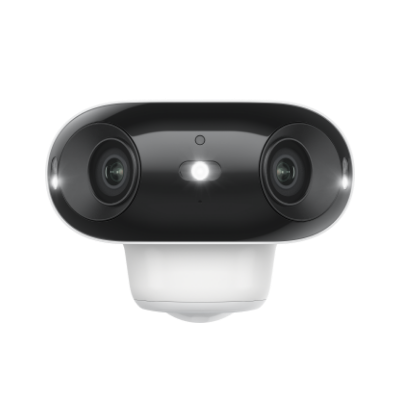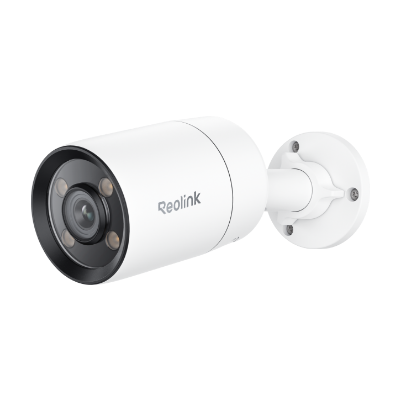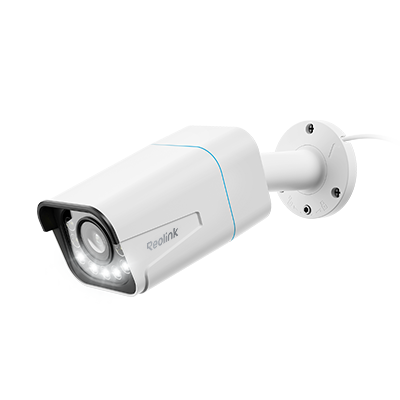Best Night Vision Security Cameras - Read This Guide Before You Buy One
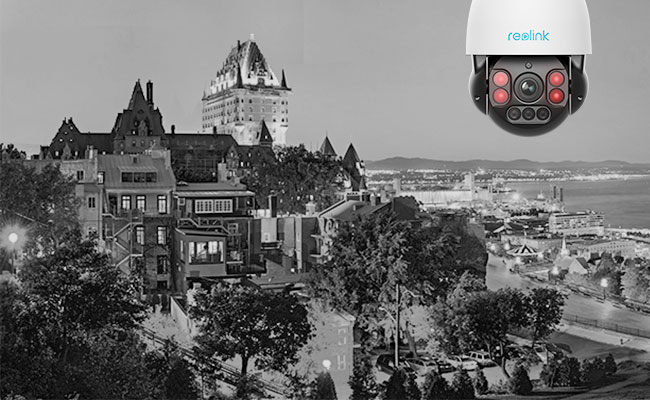
Night vision security cameras are becoming more and more popular, as people are looking for ways to keep their homes and businesses safe at all hours of the day and night. There are many different types of best night security cameras available, but not all of them are created equal.
Here we will discuss some of the key things to look for when choosing a night vision security camera, as well as some of the pros and cons of the different types of night vision available.
- What is a Night Vision Security Camera?
- How do they work?
- Types of Night Vision for Cameras
- Best Night Vision Security Cameras
- Choosing Best Night Vision Cameras: Top 5 Key Features
- Buying Tips for Best Nighttime Security Camera
- Troubleshooting Tips for Reolink Night Vision Security Cameras
- Bonus: Why Are Night Vision Cameras Blurry at Night?
- FAQs
- Conclusion
What is a Night Vision Security Camera?
A night vision security camera is a type of surveillance camera that is able to see in low-light or no-light conditions. They typically have infrared (IR) LED illuminators, which emit invisible light that the camera can see. This allows the camera to produce a clear image, even in very low-light environments.
The night vision capability has gradually become necessary for security cameras because many break-ins and burglary happen at night. You'll feel safer as you know there's a camera watching your assets when you are deep in sleep or away from your business.
How Do Night Vision Security Cameras Work?
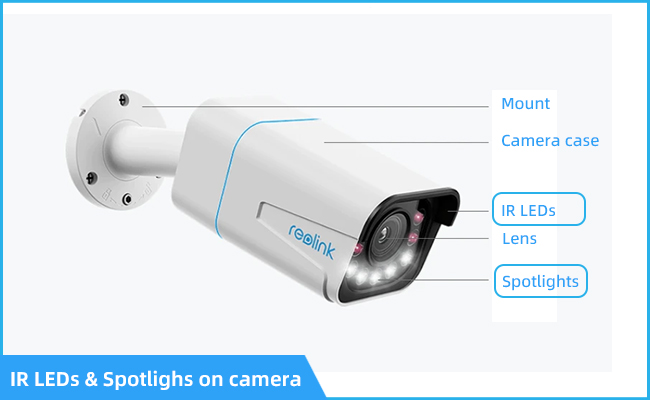
Night vision security cameras work by using infrared (IR) light to see in the dark. IR LEDs emit invisible IR light which is captured by the camera, allowing it to see in the darkness. Some night vision security cameras also use spotlights to illuminate the area, which allows them to see even in complete darkness.
That being said, there exist various types of night vision security cameras and the technologies that make them see in the dark are different.
The most common night vision cameras are IR (infrared) cameras. Usually, infrared night vision cameras have multiple built-in IR LEDs, which are often set inside around the lens. When it's pitch black outside, these IR LEDs will emit invisible infrared light for the camera can capture images or videos in the darkness.
IR security cameras also have an IR cut filter in between the lens and the image sensor. The filter is used to detect ambient light such as daylight and visible light. During the day, the filter allows sunlight to pass through and block out infrared light falling on the image sensor for great clarity and color. At night, the filter allows infrared light to reach the image sensor for clear footage.
Apart from using infrared lights, many manufacturers adopt real spotlights to shine everything in the dark. Spotlight security cameras seem to have better night vision capability. Even if there is no light at all, the camera's spotlight can be turned on and shine brightly. Everything in front of the camera will be captured clearly.
Types of Night Vision for Cameras
Generally speaking, night vision can be divided into three types: IR night vision, starlight night vision, and color night vision. Each one of them is supported by special technology and has a different effect.
Comparison Table
IR (Infrared) night vision
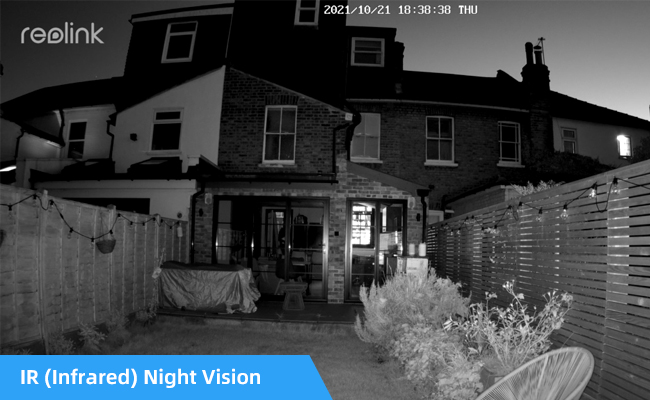
As mentioned above, infrared cameras depend on the reflected lights of objects and produce black & white images. The key point lies in IR LEDs that emit infrared lights.
Even though IR night vision security cameras bring great convenience in protecting homes, the drawback is that the built-in IR LEDs are not that powerful and can only illuminate things within limited areas when it's dark out.
Night vision performance can be affected by two main factors of IR LEDs: the number and the power. The number of IR LEDs determines how many lights the image sensor will receive. This means the more IR LEDs there are, the camera can see more clearly in the dark.
The power of IR LEDs is also important. Generally speaking, the IR distance of security cameras ranges from 30ft to 250ft. 30ft night vision range may require 8 IR LEDs while 250ft requires 64 IR LEDs. But if the IR LED is powerful enough, fewer LEDs are needed for the same IR distance.
IR night vision cameras usually emit infrared light of 850nm or 940nm wavelength, both of which are invisible to human eyes. The main difference is that 850nm infrared LED will produce a faint red glow if you look directly and carefully at the camera, while 940nm infrared LED produces no glow at all. However, a 940nm IR LED may be less effective and can illuminate fewer areas than the 850nm one.
Color night vision with spotlight
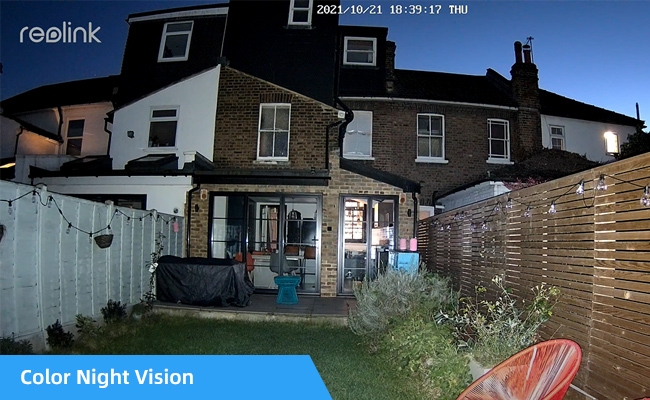
Besides making use of natural light and advanced technology, there is another two ways to produce color night vision. The most direct way to see in the dark is to create light sources.
Color night vision security cameras with spotlights have become trending products in the market. These cameras have built-in spotlights that can be manually turned on or activated by motion at night. The spotlights can emit bright and white lights to illuminate everything in front of the camera. Even in total darkness, you can see clear and full-color images.
ColorX night vision security cameras with 3000k warm lights has been developed recently. They can gradually increase brightness without contributing to light pollution. And the light is more natural.
While starlight security cameras are rather expensive for their advanced image sensor, color night security cameras are more budget-friendly. Also, they can give you stronger protection because the spotlights can deter would-be burglars and stop the crime before it happens.
Starlight night vision
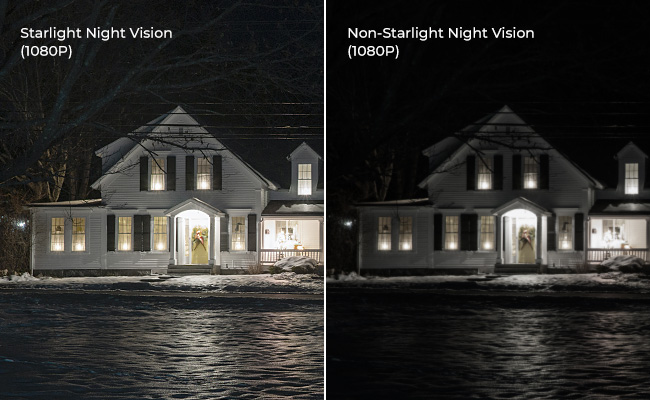
Starlight night vision is only provided by starlight security cameras, which use image sensor technology to produce good quality color images in low light conditions.
Starlight cameras don't emit any light. They are exceptionally sensitive to light and work by collecting and amplifying the light from stars, moon, and other objects. And they could give you sharper and clearer images than your eyes could see even in almost 0 Lux conditions.
This extraordinary feature is made possible by starlight sensor technology and sophisticated noise suppression. Starlight cameras use larger size sensors (usually 1/1.8" sensors), wider aperture, and reduces the shutter speed to collect enough light for the human face, plate number, and everything else.
Starlight night vision is better than typical IR night vision in terms of image clarity and quality. Also, starlight cameras can provide color night vision even in low light conditions where other cameras have to turn their IR lights on.
Although starlight cameras provide high-quality night vision, but not necessarily color night vision. In order to see details clearly in extremely poor light conditions, like human faces and plate numbers, most quality starlight security cameras will automatically turn to black and white mode for the best clarity.
By contrast, even in the low light condition, ColorX night vision cameras will not turn into black and white mode. They still provide high-quality color images. which attribute to its 1/1.8" sensor and F1.0 aperture. The more sensitive sensor and super aperture allow more light to enter the camera, thus making the image brighter.
Best Night Vision Security Cameras
Choosing the best night vision CCTV camera can be challenging with the variety of alternatives available, but here are some top recommendations to help you make an informed decision.
Best wireless night vision camera with continuous recording: Reolink Altas PT Ultra
Night vision capability is crucial for continuous recording security cameras. The new Reolink Altas PT Ultra addresses the issue of battery-powered cameras not being able to record continuously and enhances night vision performance. With a 20,000 mAh battery, the Altas PT Ultra can last up to 8+ days, recording 12 hours a day.
It utilizes Reolink’s ColorX technology to capture true full-color night vision without relying on visible spotlights. Combined with its pan & tilt capability, this camera boasts excellent surveillance power.
Industry-leading 4K Continuous Recording Battery Camera
4K UHD Continuous Recording; ColorX Night Vision; Pan & Tilt; Automatic Tracking; All Recordings Stored Locally.
Best wireless outdoor security camera with night vision - Reolink Argus 4 Pro
The highly anticipated release of the brand-new Reolink Argus 4 Pro has captured the attention of Reolink users worldwide.
4k 180° Wire-free Color Night Vision Camera
4K UHD 180° Blindspot-free View; Color Vision Day and Night; 30% More Battery Life; Dual-band Wi-Fi 6; Smart detection.
With a quality image sensor and large lens aperture, it offers 4K color night vision day and night.
Key features:
- Full Color night vision - much clearer footage even in no light conditions.
- 4K UHD 180° Blindspot-free View - two lenses leave no blind spots.
- Battery-Powered & Wire-free - so you can put it anywhere, with no cords and wiring.
- Dual-band WiFi 6 - strong signal for smmoth 4K live streaming.
For buyers that require full-color night vision without noticeable lighting, the Reolink Argus 4 Pro is an ideal option. Alternatively, customers looking for a low-cost, high-performance option may choose to explore the regular Argus 4 version.
4k 180° Blindspot-free Wi-Fi 6 Camera
4K UHD 180° Blindspot-free View; Dual-band Wi-Fi 6; Smart detection; Easy Installation Anywhere
Super aperture colorX night vision security camera - Reolink CX410
2K PoE ColorX Night Vision Camera
2K 4MP; F1.0 Super Aperture; ColorX True Full Color Night Vision; 3000K Adjustable Warm Light; Advanced 1/1.8'' Sensor; 2-Way Audio.
Reolink CX 410 is Reolink's latest color night vision security camera. Because of its F1.0 super aperture and a more sensitive sensor, it doesn't need to switch on the lights to take genuine color pictures.
Key features:
- F1.0 super aperture allows more light to enter the camera, thus increasing the exposure and making the photo brighter.
- 2K resolution makes the night images sharper.
- 3000K adjustable warm light makes the night images more natural.
Best weatherproof outdoor night vision security camera – Reolink RLC-811A
4K Smart PoE Camera with 5 Spotlights
4K 8MP Ultra HD Day & Night, Person/Vehicle Alerts, 5X Optical Zoom, Two-Way Audio, Built-in Siren, Color Night Vision, Live View Anywhere.
This long-range CCTV night vision security camera is one of the best sellers. By default, it captures white and black night vision at dark in very high quality, and this is one of the favorable features for all its users.
Key features:
- 100 feet long range night vision - up to 100 feet night vision without any lighting.
- IP66 waterproof rating - you can put it outdoors or indoors, no matter how the weather conditions are.
- 4K ultra HD - much clearer than 1080p Full HD and closer to reality.
Choosing Best Night Vision Cameras: Top 5 Key Features
Which of the following cctv types would you use in areas with little or no light? Color or black-and-white night vision? Should you choose a color night vision security camera instead of a white and black night vision camera?
There is no "right " or "wrong" answer to these because they all have pros and cons. Before choosing the best security cameras with night vision capability, you need to know 5 important factors below:
Super aperture
Security cameras with super aperture have larger lens openings, allowing more lights to reach the image sensor. This results in clearer and brighter images, particularly during nighttime surveillance. By maximizing light intake, super aperture cameras can enhance image quality and provide better visibility of important details, such as faces or license plate numbers.
High resolution
The security camera resolution should at least reach 1080p (1920 x 1080). The higher resolution the night vision security camera has, the more details and clearer footage it would record, including facial details and license plates number.
Long range
This indicates how far the camera with night vision could see at night. A long-range night vision security camera should see at least 30 feet. In our test, the night vision range of Reolink Argus 3 Pro and Reolink Go Plus is 33 feet, RLC-810A 100 feet and RLC-823A 190 feet!
3D DNR
Also called multidimensional digital noise reduction. This technology is adopted to remove image noise and compensates for image distortion caused by color blending errors by extrapolating. A quality night vision camera should have this basic technology for better performance.
Wide field of view
The larger the viewing angle of the surveillance camera, the more it would capture, and the fewer blind spot you would have. The article How to Choose Wide-Angle Security Cameras includes detailed explanation of how the lens and image sensor determine the camera's viewing angle.
3D DNR (Dynamic Noise Reduction) is a technology used in digital cameras to reduce noise in an image. It does this by taking multiple frames of the same scene and comparing them to each other. Any differences between the frames are then used to remove the noise from the image. This can be done either in hardware or software.
The main advantage of 3D DNR is that it can produce a cleaner image than traditional noise reduction methods. This is because it uses information from multiple frames, rather than just one, to remove the noise. This also makes it more effective in low light conditions.
Buying Tips for Best Nighttime Security Camera
After you've learned the importance and key features of night vision security cameras, you may remain unsure whether the camera you choose has real or hight quality night vision.
Here are 5 buying tips for you when buying the best night vision security camera:
- Check the camera's specifications to see if there is night vision in the list. Find answers to these questions: Is there an IR LED or spotlight? How many IR LEDs or spotlights does it have? Is the IR LED 850nm or 940nm (invisible)?
- Ask the manufacturer to provide night vision video samples.
- Watch night vision footage shared by any other customer.
- Read media reviews of the security camera with night vision. You can find reviews on Amazon, Reddit, forum, PCMag, ZDNet, and other review website.
- Google to see if you can find more customer reviews of the product's night vision.
Troubleshooting Tips for Reolink Night Vision Security Cameras
If you use a Reolink night vision camera for home security surveillance, you may face these problems. Sometimes your home security camera is on but the night vision system doesn't work at all; or sometimes the infrared light doesn't show up in the night vision system; or the camera works during the day but loses video at night and doesn't work anymore.
If you are experiencing problems with your night vision surveillance camera not working or not recording, following these troubleshooting steps may help you:
- Make sure cameras are powered on, especially for wireless models, and check all cables and wiring connections for secure and proper alignment.
- Check the lens for dust or debris and, if necessary, clean the lens with a soft cloth. and check that the lens is not obscured.
- Make sure that the environment is dark enough for the night vision system to work. The camera's night vision system can only be activated and used if the light environment is below a certain lux value.
- Check that the infrared sensor in the camera is working (see if the infrared sensor lights up red in the dark). If the IR light still does not appear in night vision mode, try resetting the camera
- If the camera is working with an NVR, swap the camera to a different port on the NVR.
- Contact the seller from whom you purchased the night vision security camera. They will give you the after-sales service and more professional advice you deserve.
Bonus: Why Are Night Vision Cameras Blurry at Night?
One of the most common complaints about security cameras is that they produce blurry images at night. There are a number of reasons why this may be the case.
1. Dust, water vapour, and small insects
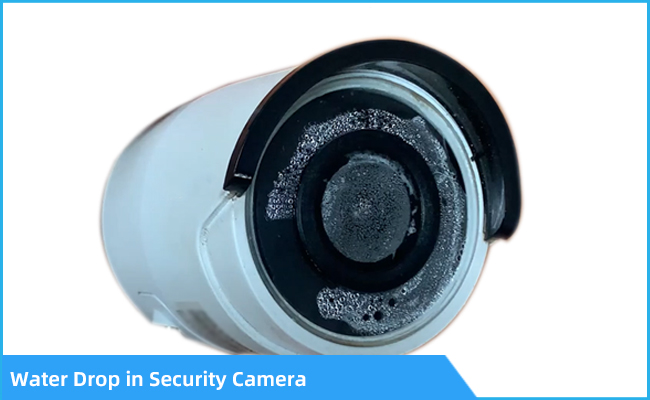
There are a number of factors that can cause security cameras to produce blurry images at night. Dust, water vapour, and small insects are among the most common culprits.
First, dust and water vapour can enter the camera through poorly sealed seams and accumulate on the lens or sensor. This can cause the captured video to appear fuzzy or distorted. In low light environments, these particles can cause the camera lens to blur the image.
Second, during the rainy season, water mist often appears on the lens, which can also lead to blurred images. Finally, small insects often find their way into security cameras, especially on the sensor. These insects can interfering with the camera's ability to produce clear images.
2. Reflective objects or light sources pointing directly at the lens
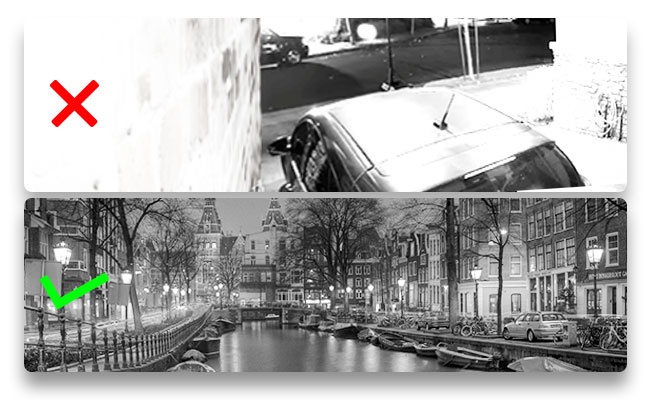
The main reason security cameras tend to blur at night is because there are strong reflective objects or light sources pointing directly at the lens. Reflective objects such as walls reflect a lot of light back into the lens, as do other light sources in your yard such as constantly lit patio lights or floodlights, this is where the camera's in-camera processing will darken other areas to maintain visibility and contrast.
This creates a large white area in the security camera's surveillance picture while the rest of your yard remains in low and low light conditions, causing these low light areas to appear dead black.
You have no way of seeing these black areas clearly and you get the feeling that the camera video is blurry.
The angle of the night vision camera is very important. Many users ignore the walls near their cameras and find the nighttime images always blurred. It is because the reflected light from the wall affects the exposure and makes the other things black.
So, while mounting the night vision security camera, you should pay attention to its angle. Never aim it at the wall or other reflective objects. Also, you'd better choose a proper angle to maximize its covering range and reduce blind spots.
3. Lack of infrared LED fill light or white LED fill light
Security cameras can be blurred at night due to a lack of IR LED fill light or white LED fill light. The camera captures a nighttime image that is too dark to see clearly. In addition, the camera's night vision is poor and the picture is more likely to be blurred.
Therefore, it is recommended that you install security cameras with infrared led fill light or white led fill light to get a clear nighttime picture.
4. Algorithm of the camera itself
Why security cameras are blurred at night, it could be the algorithm of the camera itself, we explain why below.
The security camera algorithm is designed to capture images in low light conditions by increasing the gain of the image sensor. However, this also has the effect of increasing noise levels in the image. To compensate for this, the algorithm applies a noise reduction filter to the image.
This filter is effective at removing some of the noise, but it also blurs the image. As a result, security camera images are often blurry at night. There are a few ways to improve the situation. One is to increase the size of the aperture. This lets in more light, which can help to reduce noise levels. Another option is to use a longer exposure time.
This captures more light, but it also increases the amount of motion blur in the image. Finally, it is possible to increase the sensitivity of the image sensor. This allows it to capture more light, but it also increases noise levels. As a result, it is important to strike a balance between these three factors to produce the best possible security camera images.
Note: Reolink's algorithm for the camera has been accumulating for many years, and the quality of nighttime imaging is guaranteed.
5. Lens flare and double image
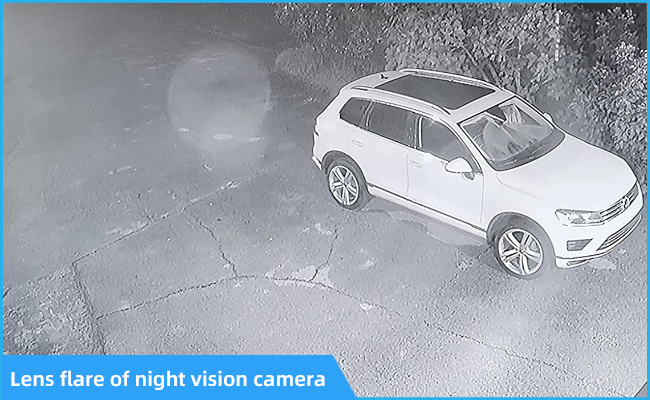
Lens flare is one of the most common problems affecting security cameras, and it can be particularly problematic at night. Lens flare occurs when light from a bright source is reflected onto the surface of the lens and enters the camera sensor.
Dome security cameras are particularly susceptible to lens flare because they have a transparent shield.
This can produce a washed out or blurred image. Lens flare is usually more noticeable at night because there are fewer other light sources to balance out the bright light.
It also has to do with the material of the coating layer on the glass of the lens; a good coating can reduce flare considerably. To reduce lens flare, you can try mounting your security camera in a dark place.
Ghosting is another problem that can cause your security camera images to appear blurred at night. Ghosting occurs when light reflected from nearby surfaces interferes with the light reaching the camera sensor. This can produce a double image that appears blurred and difficult to interpret.
The best way to reduce ghosting is to position your camera so that it is not near any bright surfaces. By taking these steps, you can help ensure that your security camera's images are clear and sharp, even at night.
6. Small scratches on the camera lens or cover
Security cameras may appear blurred at night, partly due to small scratches on the lens glass or the protective cover of a dome security camera. The video may be fine during the day, but at night, the scratches may affect the image quality.
These scratches can result in a loss of image quality and may have been caused during the manufacture, delivery or installation of the camera. Sometimes you may see these small scratches in the reflection.
The material of the lens can also affect the image quality - using a hard, scratch-resistant material can avoid this problem. It is recommended that you choose a camera made by a manufacturer with a good reputation for the quality of their lens materials.
7. The camera is installed behind a glass window
Pointing the camera with night vision for security behind a glass window intending to look outside may result in a poor image because of glare and lighting conditions inside and outside the house. Therefore, it's not suggested to put your security camera night vision behind glass windows.
FAQs
1. What types of security camera is best for night?
A security camera with night vision is the best type for night because it can see in the dark. This is due to the fact that security cameras with night vision have an infrared light that allows them to see in the dark.
2. How far can a night vision security camera see?
A night vision security camera can see up to around 50 feet in complete darkness.
This range can vary depending on the quality of the camera, as well as the level of darkness present. However, most night vision security cameras are capable of seeing fairly well in low-light or dark conditions.
3. Can night vision cameras work in complete darkness?
Yes, it is possible to have night vision security cameras that work in complete darkness. These cameras are equipped with infrared technology that allows them to capture images in the dark. This type of camera is a great option for businesses or homes that want added security during the night hours.
Conclusion
Overall, night vision security cameras are a great way to keep your home or business safe and secure at all hours of the day and night. There are many different types of night vision security cameras available, so be sure to do your research before buying one to make sure you get the best camera for your needs.
Thanks for reading! We hope this post has been helpful in deciding whether or not a night vision security camera is right for you. If you have any questions or comment, please leave us a message below. And don't forget to share this post with your friends if you found it helpful!
Search
Be in the Know
Security insights & offers right into your inbox

